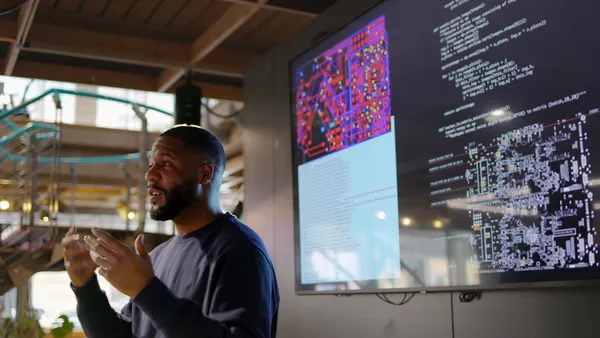Dive Brief:
- A majority of 14- to 18-year-olds — 87% — are aware of surveillance technologies in their schools, according to a survey released by the American Civil Liberties Union polling 502 students in October 2022. For instance, students reported that their schools use video cameras (62%), monitoring software on school-issued devices (49%) and social media monitoring (27%).
- The ACLU's survey also pointed out unsettling issues some students have with surveillance technology in schools. Some 32% said these security measures lead them to “always feel like I’m being watched,” while 24% said school surveillance makes them feel limited in their access to online resources.
- The report, overall, flags that surveillance technology — like school communications monitoring, online monitoring and web filtering, weapon detection systems, and remote video monitoring — foster a false sense of security with little evidence backing that these technologies actually improve school safety.
Dive Insight:
The ACLU report comes as other surveys have highlighted community concerns surrounding surveillance technology in schools.
From a parental perspective, a July study by the nonprofit Center for Democracy and Technology found surveillance on school-issued devices in particular takes a mental toll on students, such as when the technology flags certain content that may prompt school disciplinary action. The study, which was based on interviews with 20 parents of high schoolers, revealed that monitoring software can further undermine their trust in their child's schools and teachers.
Schools often rely on this technology to weed out bullying and inappropriate content and prevent potential violence. Some 40% of students surveyed by the ACLU also said school surveillance made them feel “safe,” while 34% said they feel “protected” by the technology.
However, the ACLU cited research from a 2021 U.S. Secret Service investigation that found social media monitoring had minimum impact on stopping premeditated school shootings. Rather, the study, which analyzed 67 plots against schools, reported that a majority of these cases were flagged from observations by plotters’ peers, school employees or family members.
The ACLU also noted that other types of surveillance technology, specifically video cameras, were in use at 8 of the 10 schools where the deadliest shootings over the past two decades took place and yet still failed to prevent those tragedies.
While investments in security products in schools and colleges are increasing, the ACLU said ed tech companies providing these surveillance services often rely on government funds costing schools little to nothing. Artificial intelligence is also playing a greater role in this technology being implemented in schools, including weapons detection.
When considering whether to use surveillance technology, the ACLU recommends district leaders adopt the following best practices:
- Define the school district’s problem.
- With that identified issue in mind, evaluate the technology’s pros and cons.
- Seek out input from the school community about the technology.
- Develop an analysis of the benefits versus the costs and potential harms.
The report further warns school policymakers that they “should not rely on unsubstantiated efficacy claims” from ed tech surveillance companies, who are driven to profit from this technology.
School leaders and community members should also not let fear influence their decision making, the ACLU said. “While that may be understandably difficult, better decisions are made through the dispassionate examination of established facts,” the organization wrote.








 Dive Awards
Dive Awards





